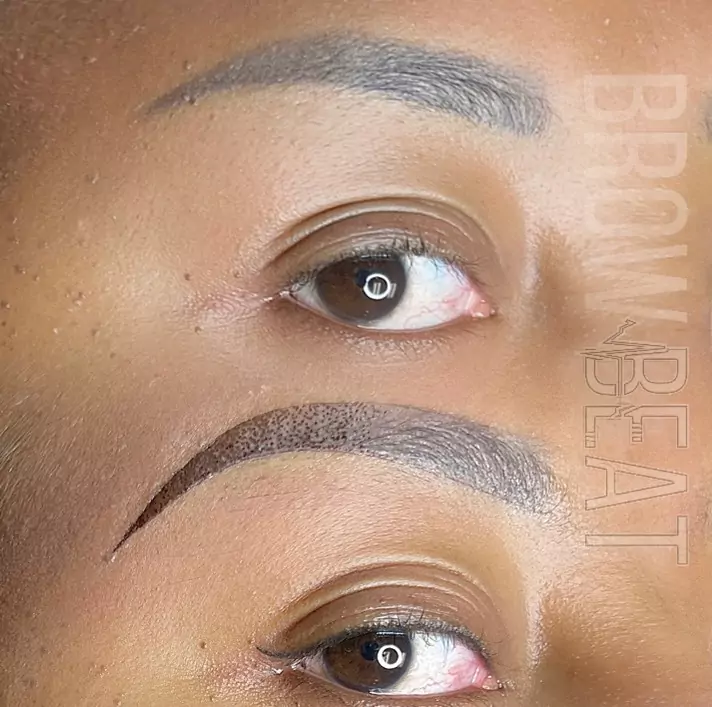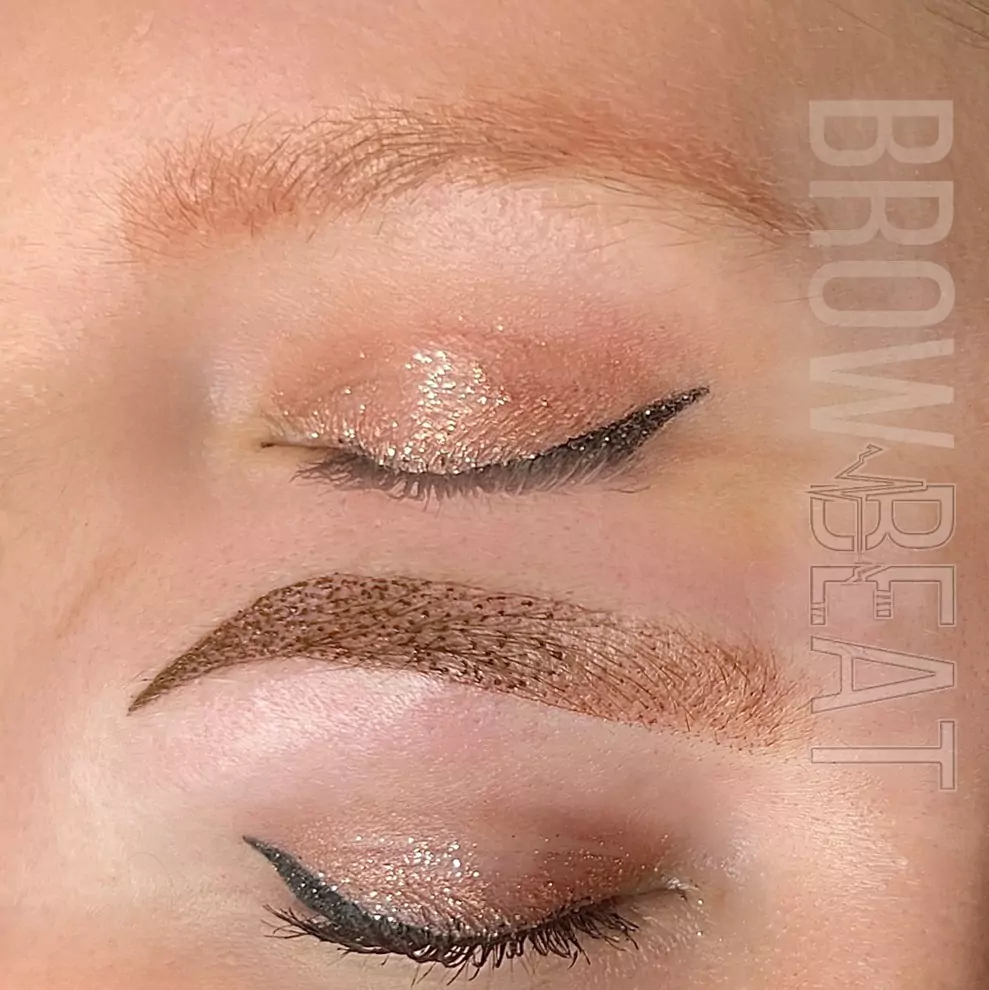Semi-permanent makeup, including microblading and tattooing, has become an essential service for many individuals seeking to enhance their natural features. These cosmetic treatments offer long-lasting results, with microblading enhancing eyebrows and tattooing transforming other areas like eyeliner and lips. However, despite their longevity, it’s important to recognize that color corrections are a normal and necessary part of the journey in semi-permanent makeup.
Whether you’re a first-time client or someone seeking to maintain your semi-permanent makeup, understanding the need for color corrections is essential. This SEO blog will explore why color corrections are a typical part of the microblading and tattoo process, when they may be needed, and how they can be effectively managed.
Understanding Semi-Permanent Makeup and Its Lifespan
Semi-permanent makeup refers to a technique where pigments are applied to the skin using specialized tools, such as microblading needles or tattoo machines, to create natural-looking enhancements. While “permanent” is used to describe the makeup, the pigments naturally fade over time. This fading is influenced by several factors, including skin type, lifestyle, and aftercare.
Typically, the lifespan of microblading and other semi-permanent tattoos lasts between 1 to 3 years. However, clients often need touch-ups or color corrections before that time to maintain the desired look. This is because pigments can fade, change color, or not heal evenly due to various reasons, making color correction a routine and important service.
Why Color Corrections Are Necessary
While semi-permanent makeup can look flawless right after the procedure, several factors may lead to the need for color correction over time. Let’s take a closer look at why color corrections are a natural part of the process.
- Pigment Fading
Over time, the pigments used in microblading and tattooing naturally fade due to exposure to sunlight, the body’s natural exfoliation process, and the skin’s healing mechanism. The skin constantly sheds dead cells, and as this happens, the pigment may gradually diminish. As a result, touch-ups or corrections are often necessary to keep the pigment looking fresh and vibrant. - Oxidation of Pigments
Pigments used in semi-permanent makeup are organic compounds that react to environmental factors. The pigment may darken or change color due to exposure to sunlight, saltwater, or even acidic skincare products. For example, a brow color might start as a cool brown but may turn warmer, taking on red or orange undertones over time. Color correction services help to balance out any unwanted tones, ensuring the makeup remains natural and flattering. - Skin Type and Healing Process
Each individual’s skin type affects how semi-permanent makeup heals. Oily skin, for instance, can cause the pigment to heal lighter or blur more quickly than dry skin. This uneven healing process often leads to the need for corrections, as some areas may retain more pigment than others, creating patchy or faded results. - Improper Aftercare
After the initial application of semi-permanent makeup, proper aftercare is essential to ensure optimal healing and retention of the pigment. If a client fails to follow aftercare instructions—such as avoiding sun exposure or excessive touching of the treated area—pigments may not heal properly, which can lead to uneven color or premature fading. - Age and Lifestyle
As clients age, their skin undergoes natural changes that can affect the appearance of semi-permanent makeup. The skin may lose elasticity, become drier, or change in tone, which can cause the pigment to look different. Additionally, lifestyle factors such as sun exposure, smoking, or using harsh skincare products can accelerate the fading process, making color corrections necessary sooner than expected.
When Do Color Corrections Become Necessary?
Clients may need color corrections at different points in their semi-permanent makeup journey. Understanding when to seek color corrections can help maintain the quality of the procedure.
- Initial Healing Phase
Immediately after the procedure, microblading or tattooed areas may appear darker than expected due to scabbing and the healing process. After the scabs fall off, clients may notice that the pigment is lighter than expected. This can be a sign that the pigment needs to be adjusted or added during a color correction session. - After the First Touch-Up
The first touch-up is often scheduled 4-6 weeks after the initial application to ensure the pigment has healed properly and to fill in any areas that didn’t hold the pigment well. If the pigment looks uneven or faded, a color correction can be performed during this session to achieve a more even and natural look. - One Year or More Post-Application
Even with proper care, after one year or more, most people will need a color correction to revive their semi-permanent makeup. This is especially true for microblading, as the fine hair-like strokes may fade or blur. Additionally, clients may notice that their eyebrows have taken on different tones due to skin changes, necessitating color adjustments. - Correction of Uneven Pigment Distribution
During the healing process, some areas of the skin may retain more pigment than others, resulting in uneven color. This is especially common in clients with oily skin. In such cases, a color correction can be performed to balance the color and make the results more uniform.

How Are Color Corrections Done?
Color correction in microblading or tattooing involves strategically adjusting the pigment to address issues like fading, color change, or uneven healing. Here’s how professionals typically handle color corrections:
- Pigment Removal or Lightening
In cases where the pigment has turned an undesirable color, such as orange or red, the artist may use a pigment lightening solution or removal process. This is done gently to avoid damaging the skin, and it allows the artist to neutralize unwanted tones and reapply a new pigment that will heal more naturally. - Pigment Reapplication
Once the old pigment has been corrected, a new layer of pigment is applied to the area. The artist may choose a different shade to match the client’s skin tone and desired results, ensuring that the new pigment complements their natural coloring. - Balancing the Color
In cases where uneven healing has occurred, color correction may involve balancing the pigment across the entire area. This process may require the artist to fill in light areas, darken overly light spots, and soften any harsh lines to create a smooth, cohesive look.
The Role of an Experienced Artist in Color Correction
The key to successful color corrections lies in the hands of a skilled and experienced artist. Only a professional with in-depth knowledge of color theory, skin types, and pigment behavior can perform effective color corrections. These artists understand how different skin tones react to pigments and can predict how certain colors may fade or shift over time.
When choosing an artist for color corrections, it’s essential to consider their experience and expertise. An experienced artist will assess the healed results, determine the appropriate color adjustments, and ensure that the correction looks natural and enhances the client’s features.
Why Choose BrowBeat for Your Microblading and Tattoo Color Corrections
At BrowBeat Studio, we specialize in microblading and tattoo color corrections, ensuring that our clients receive the highest quality results. With years of experience and a team of experts who understand the intricacies of semi-permanent makeup, we take pride in providing exceptional service for those seeking to refresh or correct their existing makeup.
Whether you’re dealing with faded pigments, unwanted undertones, or uneven results, BrowBeat’s certified experts have the skills and knowledge to bring your desired look back to life. We utilize the latest techniques and high-quality pigments to achieve the most natural and flawless outcomes for our clients.
Conclusion
Color corrections are an integral part of the microblading and tattoo process. Whether you need to address fading pigments, color shifts, or uneven healing, color corrections can help restore your semi-permanent makeup to its full potential. Understanding that these corrections are normal and part of the long-term care process will help you manage your expectations and maintain a beautiful, fresh look over time. Always consult with an experienced professional, such as those at BrowBeat, for expert advice and top-quality results.
By embracing the color correction process, you can ensure that your semi-permanent makeup continues to enhance your features, looking vibrant and natural for years to come.

